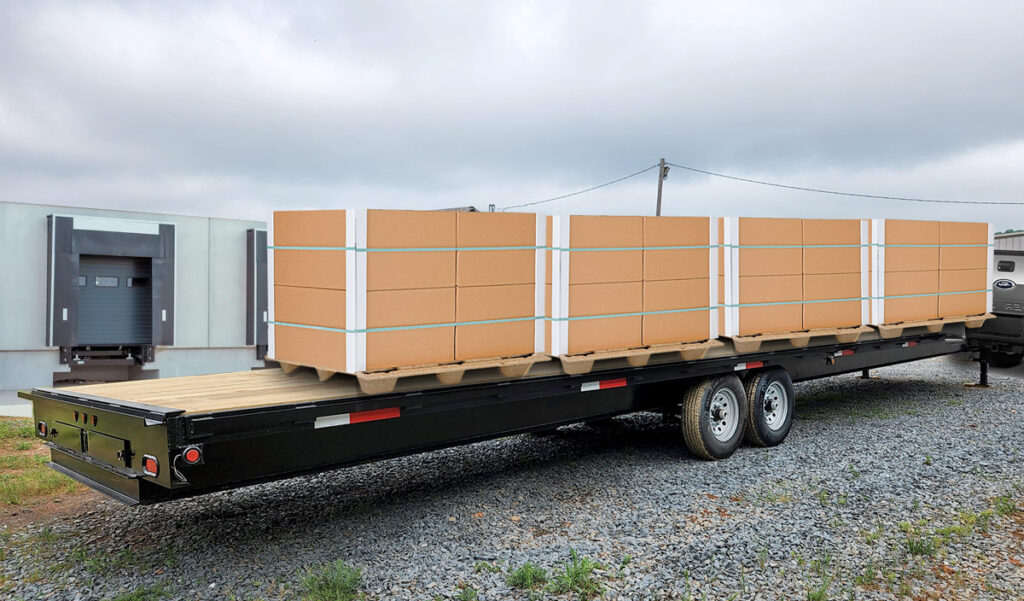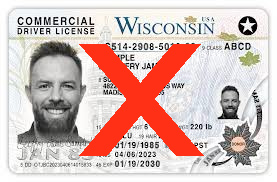How much trailer and cargo can my truck tow?

So, you’ve got your truck, and be it new or old, electric or gas, one thing remains constant for all truck owners: the open road is calling your name. Whether you’re eyeing the hot shot trucking scene or just eager to hit the highways with a trailer in tow, one burning question looms large: How much trailer and cargo can your truck handle? Fear not, future hotshotter – we’ve got your back!
Understanding the Basics
Let’s kick things off by getting cozy with some jargon. You’ll frequently encounter terms like GVWR (Gross Vehicle Weight Rating) and GCWR (Gross Combination Weight Rating). These acronyms are important for you to understand when it comes to determining your truck’s towing capabilities.
GVWR (Gross Vehicle Weight Rating): This is the maximum weight your truck is rated to safely carry, including its own weight and the payload. It’s like the maximum height marker for semis as they approach an underpass – your truck can’t go beyond this limit.

GCWR (Gross Combination Weight Rating): GCWR is the total weight your truck and the trailer can handle together, without breaking a sweat. It includes the truck’s weight, the trailer’s weight, and everything you’re hauling.
Hot Shot Trucking Dreams: What’s Your Goal?
Alright, hotshotter, let’s set the stage. Are you planning on hauling small, time-sensitive loads across short distances? If yes, hot shot trucking might just be your gig. Hot shotting involves using your trusty pickup to transport smaller loads on a gooseneck trailer, offering flexibility and speed that larger trucks can’t match.
Gooseneck Trailers: These trailers distribute weight more evenly over the truck, providing better control and stability. Plus, they’re more maneuverable than their conventional counterparts, making those tight spots a breeze. The hitch of a gooseneck trailer attaches over the truck’s rear axle, providing better stability and weight distribution. It’s perfect for hotshotting because of its sheer utility and adaptability. It doesn’t matter if you’re cliffside in California or on the icy highways of Minnesota: 9 times out of 10, a gooseneck has you covered.
The Numbers Game: GVWR, GCWR, and Derating

Now, let’s dive into the nitty-gritty. Derating a trailer might sound like high-tech wizardry, but in some senses, it’s a fancy way of saying, “Let’s not push our luck.” Beyond safety, the true use of trailer derating is to avoid having to get a Commercial Trucker’s License (CDL) if your trailer is designed with a GVWR over a certain threshold.
This is by no means a loophole: derating lowers the weight capacity of your trailer in the eyes of regulatory bodies, meaning you can’t haul above your adjusted rating, even though your trailer may technically be capable of handling it.
What Does Derating a Trailer Mean?
To a layman, it may appear that it’s about playing it safe. The actual weight your truck can pull might be higher than its rated capacity, but derating ensures you’re not pushing the envelope too far. This is true, but as stated it has more to do with regulation. The actual process of derating is not a physical one; essentially, the trailer manufacturer just slaps a lower GVWR onto the VIN plate during fabrication. Nothing about the trailer is changed, except the recorded GVWR.
Know Your Truck’s Limits
Before you start dreaming about the open road, it’s crucial to know your truck’s GVWR and GCWR. These numbers are often found in your truck’s owner’s manual, on the driver-side door jamb, and on the VIN plate. Don’t skip this step – it’s the foundation of a safe and smooth hauling experience.
Here’s a golden rule for hot shot trucking: Your trailer’s weight, combined with your cargo, should never exceed your truck’s GCWR. It’s like a math equation – keep it balanced, and you’ll roll down the highway with confidence.
Navigating Legal Waters: Don’t Break the Law
Now, let’s chat about legalities. We all love the freedom of the open road, but towing regulations are there for a reason. Exceeding your truck’s limits can lead to fines, headaches, and a tarnished driving record.
Stay Legal, Stay Smart: Familiarize yourself with local and federal towing regulations. Different states often have varying rules, so do your homework before hitting the road. Ignorance isn’t bliss when you’re facing a hefty ticket.
Additional Considerations
As you embark on your hot shot trucking journey, here are a few extra tips to keep in mind:
Payload Capacity: Don’t overlook your truck’s payload capacity. It’s the combined weight your truck can carry in the bed and in the cab. Overloading this space can impact steering and braking.
Tire Load Ratings: Check your truck’s tire load ratings to ensure they can handle the added stress of towing. The last thing you want is a blowout on the highway.
Braking Power:Upgrading your truck’s braking system might be a wise investment, especially when you’re hauling a considerable load. It’s the difference between a smooth stop and white-knuckle panic.
Wrapping It Up
Congratulations, future hotshotter! You’ve just unlocked the secrets to towing success. Remember, understanding your truck’s GVWR and GCWR, choosing the right gooseneck trailer, and staying within legal limits are the keys to a seamless hot shot trucking experience.
So, rev up that engine, hitch up that gooseneck trailer, and hit the road with confidence. Your hot shot trucking adventure awaits – just be sure to stay safe and legal, and enjoy the ride!
